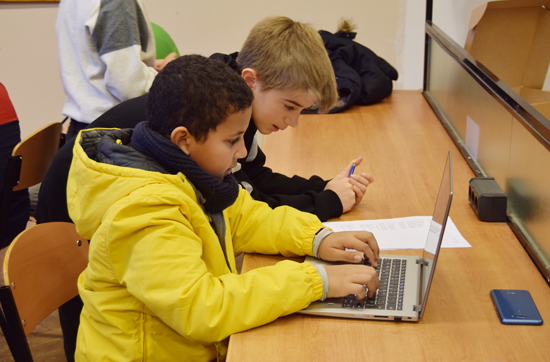Due to the arrival of the coronavirus many schools, extracurricular activities and other training for both children and adults have experienced with online education or e-learning for the first time. E-learning is a modality that, as we explained some months ago, requires a different preparedness because it presents specific challenges. Given the uncertainty surrounding the 2020-2021 academic year and all the doubts regarding how to deal with a second wave of coronavirus in Europe, the “new normality” has given more importance to a term that Codelearn knows very well: blended learning.
Blended learning is a methodology that combines face-to-face education and online education. It is a very comprehensive type of education which allows overcoming the difficulties of distance education and takes advantage of the benefits of both types of education. Thus, it offers flexible training that allows personalised follow-up of all students and makes them more involved in their own learning. Thanks to blended learning, education revolves around the student, who can play a much more active role and should be more independent than in face-to-face education, but at the same time he finds different points of interaction and socialization both with their teacher and other classmates so the feeling of loneliness existing in online education disappears.
Blended learning allows each student to choose the place, the time and the amount of hours he wants to study. He can also choose which topics he prefers to work autonomously and which doubts and difficulties he prefers to discuss with his teacher during on-site classes. In other words, blended learning is an efficient and personalised learning that allows each student to organize his work in the best possible way taking into account his personal situation.
This level of flexibility enhances student’s ability to search for information and delve into subjects, so that he is always active and does not lose motivation. At the same time, this autonomous learning process means that blended learning also contributes to the development of critical thinking and boosts participation, which are very important skills in our society. Throughout this process students can rely on the support of professionals who help them finding the necessary resources either through face-to-face explanations or sharing the best digital tools.
Codelearn is a coding and robotics after-school program which uses an online platform as the basis of its method. Students attend class an hour a week and they can socialize with their teacher and other students, but as they can also access the platform from home and do more exercises, each of them move at their own pace and whenever they are in classroom they do not have to listen to the same explanation nor have to wait for each other. Thus, face-to-face classes are a meeting point where the teacher helps them one by one, and at the same time they can use other educational resources and do face-to-face activities beyond the platform which help them learning to code and develop computational thinking.
If there was no possibility to connect to an online platform and learn from home, on-site classes would be more homogeneous, everyone would have to follow a similar pace and it would be difficult to personalize learning. Blended learning allows us to use the best parts of both in-person and online education in order to adapt to the current needs of children and adolescents who need face-to-face encounters but who also have grown up surrounded by technological resources we need to know how to take advantage of.

